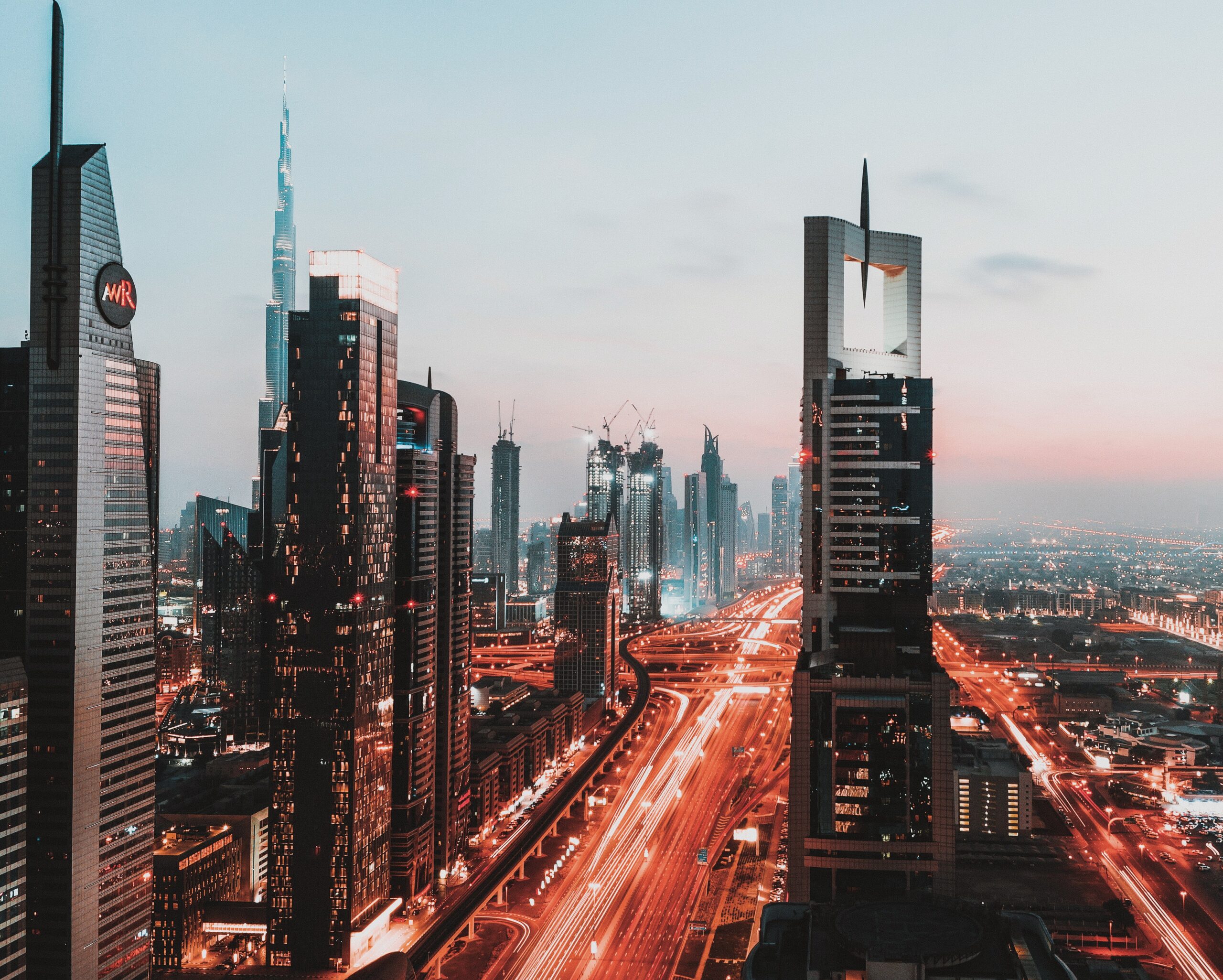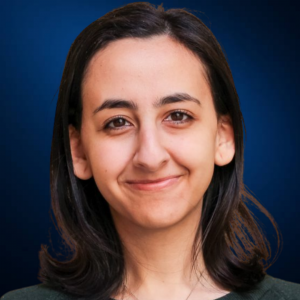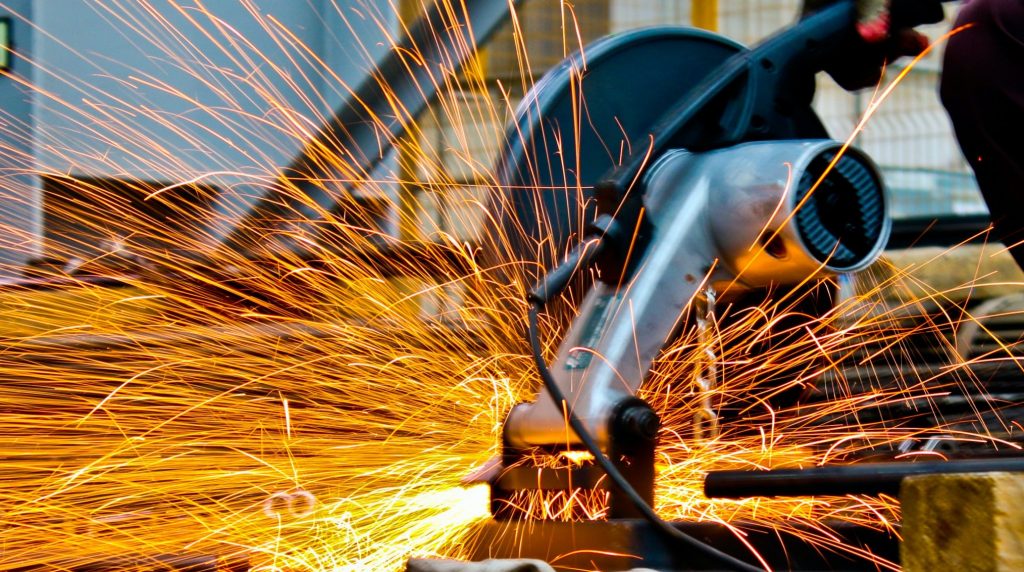Dubai holds over 40 Guinness world records. Records range from the world’s highest building (Burj Khalifa, at 830 meters or 2,723 feet) to recent bids for the longest cake, largest apple pie, and biggest baba-ganoush, according to the Gulf News portal.

The city has come a long way from being a patch of desert before the 1970s. The pearling industry was the region’s pillar throughout the 19th and early 20th centuries said Harrison Jacobs of Business Insider. However, when that industry “dried up,” so did the economy, and what is now the lavish, luxurious Dubai became an “unremarkable port in the Gulf region,” he said.
With the discovery of oil in 1966, the emirate got its chance, attracting oil and gas FDI to build its economy. In the 56 years since, Dubai diversified its economy to become a regional business hub for multinational companies and startups alike. Tourism flourished as a result of the high foreigner footfall. Accordingly, Dubai featured in Forbes Magazine, online travel company Tripadvisor and many other media outlets as a recommended destination for tourists.
Investing in raising Dubai’s profile as a tourism and business destination meant the emirate had some insurance against the economic shocks from the 2008 global financial crisis. It also helped it recover from the debt crisis it suffered the following year.
It might be tempting for other cities to see Dubai as a model for rapid development. However, diversifying an oil-dependent economy is not as easy as it may appear, and it comes with some social and cultural compromises, wrote Jacobs.
Plans and planes
It wasn’t until the creation of Jebel Ali Free Zone in 1985 that Dubai started becoming a hub of operations for international companies. However, the term free zone is a bit of a “misnomer,” said Daniel Brook in his book “A History of Future Cities.” While free zones typically refer to “areas where companies are exempt from taxation,” Dubai had no corporate income tax, to begin with, he said. Instead, the government was “largely funded by state-owned enterprises, oil revenues, and sin taxes on alcohol.”
He likened Jebel Ali to the Special Economic Zone (SEZ) in Deng Xiaoping’s China. That meant different laws applied within SEZs. For example, Shariah law applies outside Jebel Ali, while inside the free zone, “business could be done much as it is done in the West, according to a specially crafted civil legal code.” Essentially, this made traveling between areas of Dubai “in a legal sense, like moving from country to country,” Brook wrote.
To boost international business in Jebel Ali, the UAE established Emirates Airlines in 1985. Based in Dubai, the largest airline in the UAE acted as “a kind of octopus, grabbing ever more far-flung parts of the world and drawing them to Dubai,” said Brook. During the first few years, Dubai became a link to the surrounding region with “Saudis and Iranians [who] came to shop and enjoy the libertine nightlife.” By 1995, the city had spread its reach even further, and 20,000 Britons were living in Dubai, attracted by the “prospect of tax-free salaries.”
A major reason for Dubai’s success was the UAE’s current Prime Minister and Dubai’s ruler Mohammed bin Rashid Al Maktoum. Before becoming a government official, he built a reputation as a skilled hostage negotiator. He negotiated with airline hijackers from the Palestine Liberation Organization, Japanese Red Army and Baader-Meinhof Gang, “an underground cell of West German radicals,” wrote Brook. While his success “barely made the international news, they foreshadowed a development strategy that would serve his city well,” Brook said.
Another central turning point for Dubai came after the 9/11 attacks. Brook noted that, at the time, all that the emirate needed a spark to “achieve liftoff.” That “spark” came with “the most devastating hijackings of them all: 9/11.” Jacobs described the time following 9/11 as years the Dubai “economy kicked into full gear.”
In the wake of 9/11, the United States passed the Patriot Act, which “provides appropriate tools required to intercept and obstruct terrorism,” according to the official text. Brook said the act’s “anti-money-laundering provision” made “investing in the United States less appealing to wealthy Gulf Arabs.” As a result, they pulled an estimated $300 billion in assets out of the U.S.
Jebel Ali Free Zone and unfavorable investment conditions elsewhere made Dubai the “logical place to invest,” said Brook. In 2002, FDI represented almost 7% of the UAE’s GDP, the highest it had ever been, according to the World Bank. Add in the 2003 Iraq war, and the resulting increase in the price of oil, and “9/11 both showered oil profits on the Gulf and ensured those profits would be invested close to home,” said Brook.
Dubai model
Dubai’s ruler was quick to capitalize, turning “increasing capital flows into a gusher,” Brook said. To avoid overreliance on the “quite modest, by Middle Eastern standards” oil reserves, the vision was to create a city that did not need to depend on oil revenue. With the increase in wealth, Sheikh Mohammed focused his policies on making Dubai a globally-renowned destination, unlike any other. A crucial part of the strategy was the construction of the Burj Khalifa to be the tallest building in the world. It has held that record since its inauguration in 2010.
According to the building’s website, Burj Khalifa embodies Dubai’s vision of itself: “This success was not based on oil reserves, but on reserves of human talent, ingenuity and initiative.” Mohamed Alabbar, chairman of Emaar Properties, which developed the tower, called it a “declaration of the Emirate’s capabilities.”
In the subsequent years, what Brook described as the “Dubai model” would emerge: “A state-owned company managed by Western experts that would thrive in open international competition.” The first was British businessman Maurice Flanagan, founder of Emirates airlines, brought on by Sheikh Mohammed. The Burj Khalifa was designed by three American architects, Adrian Smith, George J. Efstathiou, and Marshall Strabala.
After a land reform decree in 2002 that allowed foreigners to own property, more foreigners flocked to Dubai. Today, more than 88% of the UAE population is not Emirati, according to data by web agency Global Media Insight. That turned Dubai into a massive real estate market, with billionaires eager to buy property. Additionally, it became a gold mine for architecture firms with ambitious projects, becoming a “gigantic construction site … a construction gold rush,” said Urban Stories.
“Housing developments sprouted up along the beachfront, and office towers rose along the city’s massive freeway spine, Sheikh Zayed Road, in the most outlandish shapes: an enormous golf tee, a silvery sandworm, even a proposed spherical Dubai Death Star,” wrote Brook. The flow of ambitious architects and engineers paved the way for the construction of signature skyscrapers, malls, and an intricate metro system that started operations in 2009.
A ‘must-see’ destination
Despite not having a colorful, storied history, Dubai’s new massive, outlandish constructions were enough to attract foreign visitors. Landmarks such as the Burj Khalifa, Dubai Mall, and Atlantis Aquapark drew curious crowds to Dubai. The UAE earned $8.5 billion in tourism revenue in 2010, the year the Burj Khalifa opened, according to the economic analysis company CEIC. The numbers have been steadily rising since. The only drop was due to COVID-19 travel restrictions, with tourism revenue dropping from $38.4 billion in 2019 to $24.6 billion in 2020. Last year, Dubai reported a 32% increase in tourists, according to The National, an Abu Dhabi-based daily newspaper.

Between 2007 and 2017, the tourism sector’s contribution to GDP grew by 138%, according to a report by Knight, a London-based property consultancy. In 2017, tourism made up 4.6% of GDP and accounted for 4.8% of employment.
While not currently the most significant contributor to GDP, the sector is on track to keep growing. In 2016, Minister of Economy Sultan Al Mansouri estimated the “tourism sector will contribute 5.4% annually over the next 10 years to reach AED 236.8 billion ($65 billion). Our vision is to make the UAE one of the most important tourist destinations in the world. This ambitious vision is aimed at promoting the tourism sector to be one of the most important pillars of the post-oil economy.”
Lesson or cautionary tale?
Suppose Dubai’s process was broken down into steps. It might go something like this: First, find an initial source of income (oil), use that income to create favorable conditions for local and foreign investors and ex-pats and, finally, in the absence of any other unique or attractive resource or feature, encourage architectural creativity.
However, Jacobs of Business Insider predicted “unease for any city that mimics [Dubai’s] rapid development.” During the 2008 global financial crisis, debt in the UAE reached an estimated $123 billion, he said, and Abu Dhabi, the capital emirate, had to bail out Dubai. While things have bounced back, Jacobs said, “there is a sense that some of the lessons of the crisis were never learned.”
Dubai’s cosmopolitan vibe could threaten the local culture. Urban Stories, a Youtube channel, called Dubai “a cultural no man’s land.” With Emiratis representing only 3% to 5% of Dubai’s population, there is no dominant culture; instead, “everyone is a guest,” Urban Stories said. The Washington Post said that in becoming a flourishing Arab city, Dubai had “sacrificed its Arabic features.”







